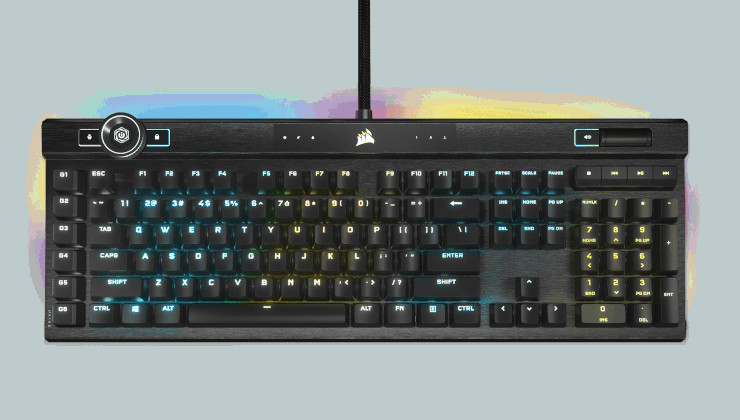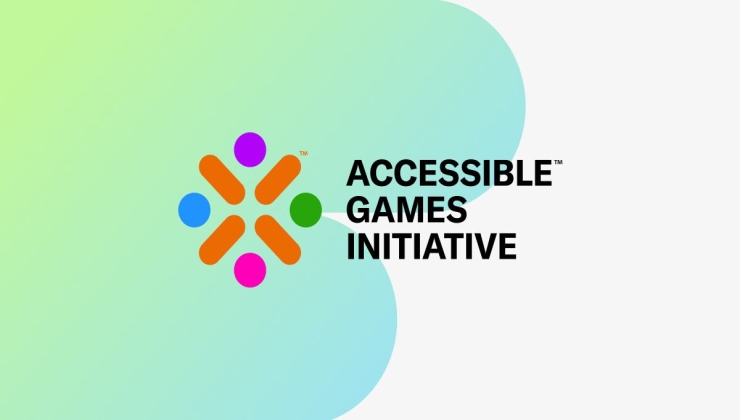Canonical has announced a change in the packaging defaults for the various "flavours" like Kubuntu, Ubuntu MATE, Ubuntu Budgie and so on to exclude Flatpak and stick with Snap. Yes that's flavours, not flavors but also flavors in the announcement.
This is no doubt going to be a hot topic, because name me a more intense argument in the Linux world than packaging. While Flatpak has been gaining many fans lately, partly because it's included as the official way to install extra packages in Desktop Mode on the Steam Deck, Canonical are sticking to their own Snap.
So what's going on? In short: Ubuntu flavours will no longer have Flatpak enabled or setup by default. However, users can still do it themselves as they're not being removed from any repositories. It's all about the out of the box experience, with Canonical and the flavours now sticking to deb and snap to maintain their focus on what is actually properly supported by them and gets the most attention.
Users who have Flatpak installed won't see any changes, it's just the out of the box new-install experience as of April 2023, with the release of Ubuntu Lunar Lobster.
This is, after all, why we have different distributions isn't it? They're free to make whatever decisions they wish, and people who don't like it can go elsewhere, or just change the defaults to their liking — Linux is open and configurable unlike certain other systems. Do what you want.
So while it's going to be controversial, it's not exactly a big deal is it? Sort of. It's still making the desktop Linux experience quite messy, especially for newer users since there's no single way of installing things across different Linux distributions. You can't usually just point people to this thing and say get that, unless you first know the exact distribution they're on.
If you have thoughts you can comment on the announcement and let them know.
No they are not.The only way Snaps become dominant is if Ubuntu grows and displaces the use of most other distros.
This is not necessarily true. Snaps are independent from Ubuntu.
If you go to the snap store you'll see no Ubuntu branding there. Canonical is marketing snap as a Linux store, not as an Ubuntu store, much like Steam is a Linux gaming store regardless of which distro you're using.That is an amazingly irrelevant argument. How Canonical markets a thing has no bearing on whether Canonical controls a thing. Except in the sense that you rarely market a thing at all unless you control it.
So, if people have no problem installing Steam, which is proprietary and tightly controlled by Valve, why would they have problem installing snap, which at least has an open source client?First, I don't think people should have a problem installing Snaps. Canonical tightly controlling Snaps is a reason for other distros not to adopt them, but it's not in any major way a reason users should have a problem with them. If you use Ubuntu, use Snaps, there's no problem with it. Just don't expect they're going to spread much beyond Ubuntu, because they won't.
As to Steam . . . well, if there were an open source store controlled by a non-profit foundation on which I could find all the games and so on and so forth, I'm sure I, and many Linux distributions, would use it. But there isn't.
Last edited by Purple Library Guy on 24 Feb 2023 at 7:27 pm UTC
Steam/Valve doesn't officially support these tools. They do support flatpak out of the box. These are not the type of tools that would be allowed necessarily in the snap store. And no, they are not Steam Deck specific, you can just as easily use them on a desktop. What I was saying is if it was Stubuntu (steam/ubuntu) as a flavor, so Canonical could have influenced that restriction.Let's say SteamOS had been built upon Ubuntu. None of those awesome utilities would be available without some nonsense. I'm betting most of them are not there as snaps.
That's one stupid "argument"...
What utilities are we talking about? Steam Deck specific ones, I suppose. Why should I have them on my Ubuntu desktop? Anyway, if the Deck was Ubuntu-based it still could provide flatpak support, because why not (IT'S NOT AN UBUNTU BRAND for chrissake) or the tools would have appeared in the snap store. Because again: Why not?
Not sure what the immutable filesystem has to do with anything, you are aware you can pretty much do that with any distro at this point? The Atari VCS does the same thing with AtariOS based on Debian.What utilities are we talking about?The original argument falls flat even in comparison what Steam OS does that Arch does not – e.g. read-only root file system and preinstalled Steam client. Arch comes without preinstalled flatpak as well.
The whole nonsense of Ubuntu declaring their flavours (that they don't even support otherwise) can't have flatpak installed by default is just a very poor cry out that 'please use our snaps!' You can't even use the ubuntu store if you rip out snap, you have to use gnome-software.
After my latest attempt to use Ubuntu... it will be the last time I attempt it. Will stick to Debian, Arch, Fedora for my uses, depending on the particular thing I need it for.
Last edited by slaapliedje on 25 Feb 2023 at 1:36 am UTC
Right... I know the difference. Do you? They still use or mirror Ubuntu's repositories. If Ubuntu decides in another year to remove flatpak from their repos, then users will have to use PPAs.And people who are basing their builds off of Ubuntu because of their more frequent release schedules are now being mandated to not being able to give their users choice. What constitutes a 'flavor' in their mind? Is that Kubuntu, or is it things like Linux Mint / PopOS. Some of them still use the Ubuntu repos. This just seems like early shots to try to eliminate competition.
Well, you could ofc inform yourself. (But I assume that's "work" and just less fun than ranting.) Well, you would have learned that distros named *ubuntu are flavors. Mint, Pop_OS!, Zorin, elementary, KDE Neon and a gazillion other ones are separate distros which can ship whatever they want.
There is a reason Mint has a debian edition. For basically this very reason!
Last edited by slaapliedje on 25 Feb 2023 at 1:50 am UTC
I thought it already had this? At least that is how I knew the Discord flatpak was unofficial qnd that Firefox is an official one.the package is marked as *Verified developer* e.g. Microsoft, or JetBrains or SpotifyComing Soon(TM) to Flathub, the about page of beta website now mentions "verified apps"
https://beta.flathub.org/about
Not sure what the immutable filesystem has to do with anything, you are aware you can pretty much do that with any distro at this point?You are getting worked up over a default setting and say that a comparable default setting doesn't have to do anything with the topic. Seriously?
Ha, how does an immutable root have anything to do with another distro enforcing other people to not have default packages so they can push their own crap? This isn't Ubuntu saying Ubuntu will not ship with flatpak by default (it already doesn't) it is saying that flavours based it can't, which they are not all hosted by them. That is where this is garbage. Not sure why people don't see this... it is a method of control, and stinks of desperation.Not sure what the immutable filesystem has to do with anything, you are aware you can pretty much do that with any distro at this point?You are getting worked up over a default setting and say that a comparable default setting doesn't have to do anything with the topic. Seriously?
(Edit: it doesn't affect me at all, as I stay away from all Ubuntu spawned distributions. I had hogh hopes for Pop_OS until they decided they were doing their own DE...)
Last edited by slaapliedje on 25 Feb 2023 at 3:44 pm UTC
If you don't like snaps, don't use a distro that use snaps. If you don't like flatpak, don't use a distro that use flatpak. If you don't like either, then you know what to do.
It's all about having the option to choose what you want to use yourself. In the end, we all win regardless
Last edited by StenPett on 25 Feb 2023 at 9:50 pm UTC
It's all a bit "meh" in my opinion.
If you don't like snaps, don't use a distro that use snaps. If you don't like flatpak, don't use a distro that use flatpak. If you don't like either, then you know what to do.
It's all about having the option to choose what you want to use yourself. In the end, we all win regardless
I agree with your overall point, although the specific detail is the other way round. Every distro can use flatpak and every distro can use snap (although Mint arbitrarily puts hurdles in the way of user choice). Whether a particular distro comes pre-configured with either is just one of countless defaults that distros can pick, and users can change. You don't need to change the whole distro just because you don't like the default settings.
All the screeching and frothing about it (and about other topics) is entirely pointless.
I'd still recommend Mint over Ubuntu to Linux newbies. That is if they feel they don't know enough to decide. What I've done in the past in an attempt to snuff my bias is show screenshots of the desktop interface of various distributions and let them decide based on appearance of window managers and how the desktop is organized.
What constitutes a 'flavor' in their mind? Is that Kubuntu, or is it things like Linux Mint / PopOS. Some of them still use the Ubuntu repos. This just seems like early shots to try to eliminate competition.
You might be on to something there. With Linux Mint, they have stated that the reason they maintain an LMDE variant is for testing and to ensure that Linux Mint would still survive should Ubuntu ever disappear...or in this case, try to screw them over. I'm positive Linux Mint will be okay, but other Ubuntu Derivatives..I"m not so sure about. I think if Canonical tried this, A lot of users of Ubuntu Derivatives would just run pure Debian or OpenSuse.
Yeah, I'd think a lot would switch to things like Sidduction, Debian, PureOS, etc. There are tons of Debian based distributions out there that are not Ubuntu based. You really do know that LMDE exists purely because Ubuntu have done some sketchy things here and there.What constitutes a 'flavor' in their mind? Is that Kubuntu, or is it things like Linux Mint / PopOS. Some of them still use the Ubuntu repos. This just seems like early shots to try to eliminate competition.
You might be on to something there. With Linux Mint, they have stated that the reason they maintain an LMDE variant is for testing and to ensure that Linux Mint would still survive should Ubuntu ever disappear...or in this case, try to screw them over. I'm positive Linux Mint will be okay, but other Ubuntu Derivatives..I"m not so sure about. I think if Canonical tried this, A lot of users of Ubuntu Derivatives would just run pure Debian or OpenSuse.









 How to set, change and reset your SteamOS / Steam Deck desktop sudo password
How to set, change and reset your SteamOS / Steam Deck desktop sudo password How to set up Decky Loader on Steam Deck / SteamOS for easy plugins
How to set up Decky Loader on Steam Deck / SteamOS for easy plugins
See more from me